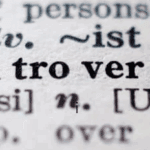
Cracking the Early Retirement Code: Beyond Fixed Deposits with Bonds

Congratulations! You’ve achieved the early retirement dream. Now comes the crucial part – building a reliable income stream that stretches your nest egg as far as possible. While fixed deposits and post office schemes offer comfort, they might not provide the returns you need on a limited corpus.
There’s a hero waiting to be discovered: bonds. Often overshadowed by the ubiquitous fixed deposit, bonds offer the potential for higher returns without venturing into high-risk territory. Let’s explore why bonds are your secret weapon for early retirement income.
Why Bonds Beat Fixed Deposits for Early Retirees:
- Maximize Returns on Your Corpus: Compared to fixed deposits, government and high-quality corporate bonds typically offer interest rates that exceed inflation. This translates to a larger and more sustainable income stream for your golden years.
- A Spectrum of Risk and Reward: Bonds come in various flavors. Government-backed bonds offer lower risk but potentially lower returns. Unsecured bonds issued by companies can offer higher interest rates, but with the caveat of carrying greater risk. You can choose bonds that fit your risk tolerance and income needs.
- Predictable Income Flow: Unlike fixed deposits with a lump-sum payout at maturity, most bonds pay interest regularly – monthly, quarterly, or semi-annually. This provides a predictable source of income for your early retirement lifestyle.
- Diversification Powerhouse: Adding bonds to your portfolio diversifies your assets, lowering your overall risk. This is crucial to avoid putting all your eggs in one basket.
Important Considerations Before Investing in Bonds:
- Credit Rating Matters: Prioritize bonds with high credit ratings, indicating a lower chance of default on the investment.
- Staggering Maturity Dates: Spreading out your bond maturities ensures a steady flow of income throughout your retirement.
- Interest Rate Sensitivity: Remember, bond prices and interest rates have an inverse relationship. As interest rates rise, bond prices generally fall. Understand this fluctuation before investing.
My Real-Life Example: Following these principles, I, myself, invested in a mix of bonds after early retirement. By doing so, I’ve been able to achieve an XIRR (internal rate of return) of over 10%. In simpler terms, every 10 lakh rupees invested generates a comfortable monthly income of Rs. 8,000 through secure, low-risk bonds.
The Bonus of Government Bonds: Government-issued bonds are considered the safest option, offering a reliable return on your investment. While corporate bonds can potentially offer higher returns, they carry a slightly higher risk factor.
Trading Bonds for Flexibility: Most bonds have a maturity period where you get your principal back. However, some bonds can be traded in the secondary market just like stocks. Their price fluctuates based on demand and supply.
Bonds are not risk-free, but they can be a game-changer for early retirees seeking to maximize their income. By strategically combining a mix of secure and slightly riskier bonds, you can create a steady income stream that allows you to enjoy a worry-free retirement.
Remember, consulting a financial advisor can help you create a personalized bond investment plan based on your risk tolerance and financial goals.
Hello, I am Aman (: Full Time Traveler :) At the age of 41, in April 2023, fueled by my love for travel and the determination not to remain fixed like a tree, I embarked on a bold journey. Having dedicated 17 years to a corporate job, I chose to transition from a full-time employee to a full-time traveler, driven by the desire to break free from the routine and constraints of a conventional life. Along the way, I not only explored the wonders of travel but also uncovered the transformative power of financial freedom. I realized how it could liberate me to lead a life teeming with adventure, purpose, and fulfillment. Through my blogs, I am passionately sharing my story, aiming to inspire and provide valuable guidance to those, like me, who aspire to weave travel into a life overflowing with limitless possibilities.






















Post Comment
You must be logged in to post a comment.